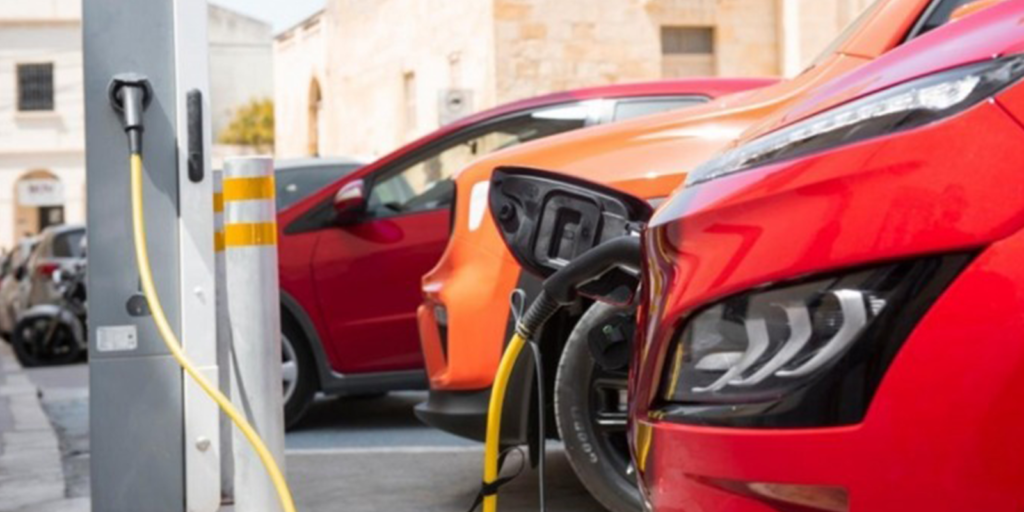English Version :
Shaping the island’s charging EV infrastructure
Malta has pledged carbon neutrality by the end of 2050. The switch towards electric vehicles (EVs) will play a crucial role in achieving this goal. We have observed that the rate of adoption of electric passenger vehicles has increased these past years.
As of March 2022, Malta has 6,000 registered electric vehicles on its road, a far cry from the 2,000 vehicles registered just two years before. This is thanks to the government’s commitment to incentivise the uptake of electric cars through a series of measures, one of which is a substantial grant for individuals and companies who want to scrap their current car and purchase a Battery Electric Vehicle.
Up until a few years ago, the main concerns for car owners purchasing an EV were price and driving range. Subsidising purchases of EVs will only do so much to get Malta to move away from conventional, fossil fuel-powered cars. Today, not having adequate charging infrastructure to support the shift towards electrification, is one defying factor in the purchase of EVs.
Since 2021, we have prioritized the increase in the availability of this infrastructure, with the aim of enacting vast networks of publicly accessible charging infrastructure. Through an investment of €3 million, from the existing 102 charging points, the amount of charging infrastructure in Malta more than tripled to 362 charging points in 70 localities; 44 of which are the first fast chargers to be introduced in Malta.
Improving infrastructure to support EVs is just as important as getting customers to buy them. For this reason, public chargers will support ad-hoc charging and an instant payment system without pre-established contracts or monthly service fees. The system is being managed by a private operator through a mobile application; “Charge my Ride”, which is compatible with both iOS and Android phones.
With a user-friendly design, a pay-as-you-go service with no subscription fees, a simplified registration process and an active charging pillar network map, this new system aims at making it easier for EV owners to find a charging pillar in their vicinity. Further information on the use of the mobile app and corresponding rates can be found on the website www.chargemyride.mt.
In its first six months of use, the Charge my Ride system registered around 1,700 new users and more than 8,000 charges across the islands. This is tangible proof that change is happening, and that further investment is needed to strengthen the public’s confidence in EV uptake.
In parallel, Malta’s first National Policy and Regulation for Electric Vehicle Public Charging Infrastructure is aimed at opening the market to private investment for public charging infrastructure accessible to the general public. Through a liberalised market, Charging Pillar Operators (CPO) will no longer need bilateral agreements with other operators. Instead, a centralised system will bring together a platform of operators competing for the unit costs of their electricity.
To incentivize this, new competitive electricity rates for electric vehicle users have been launched using a system of on and off-peak hours, for both residential and non-residential charging. Not only will EV owners pay less to charge their EV, but also benefit from one of the cheapest EV tariffs in Europe, as such they will also be reducing unnecessary pressures on the grid. This new system will help us achieve our targets by emphasising the shift towards a competitive market whilst harmonising payment systems with minimum requirements
I strongly believe that we cannot stop here. Now that we have triggered the momentum to shift our transport sector towards electromobility, we must continue to invest in this transition. The government is committed to a long-term, holistic vision on charging infrastructure addressing citizens and enterprises alike.
Over the next years, through national and EU funds, the Ministry for Environment, Energy and Enterprise will be installing a further 1,200 charging points, resulting in more than 750 charging pillars by 2024. Private companies will also be able to benefit from tax credits of up to 50% on the purchase of EVs, up to €50,000, as well as a no-interest loan from the Malta Development Bank for the investment in charging infrastructure.
Apart from the public infrastructural improvements and incentives available, there are other considerations which cannot be overlooked. One of which is the need for increase of private charging infrastructure in commercial areas.
This rapid transition would enable a faster route towards accessibility to charge infrastructure while enabling Malta to be on the forefront of the European electromobility transition. As the demand for the use of EVs is rising, we need a qualified workforce to handle EV repairs and adequate repair facilities which cater for both EVs and ICE vehicles. Electromobility can no longer be pursued in isolation.
We need academia, private investors, industry and government alike to play their part in facilitating this shift. Electric vehicles can and should be the way forward for Malta’s transport sector.
Now that the Government is actively working towards this change, it is time for you, as an individual and as a businessperson to also make this positive transition.
Source: MaltaToday – 27.04.2022
